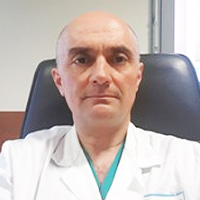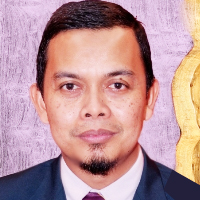Effect of crossfit-trainings on the heart rate of adolescent judokas
Published on: 23rd November, 2022
Background: One of the types of the complex control system is medico-biological, which includes a set of methods and measures aimed at assessing the health, and functional state of the athlete’s body, taking into account the reaction of his systems to various loads. CrossFit is a constantly varied and high-intensity functional training program in which with increasing the training load, the pulse rate increases.The context and purpose of the study: The research was aimed to find out the frequency of heart rate of adolescent judokas in the presence of CrossFit-trainings in the process of physical fitness, for which a pedagogical scientific experiment was held at the youth sports and cultural training center after V. Zakaryan (Hrazdan city). From the groups of 10-12-year-olds practicing judo at the sports school, one experimental and control group was formed, each with 10 athletes. During CrossFit-trainings “Tabata”, “AMRAP”, “21-15-9” and “WOD” methods were mainly used. Athletes’ pulse rate was measured manually at the wrist before training, during training, and immediately after training in order to control the athletes’ feelings toward the training load.Results: In the September-June period, with the implementation of the CrossFit-training program, the heart rate of athletes before training was on average 102,2 bpm, during training 158,3 bpm and immediately after training – 157,8 bpm.Conclusion: The indicators obtained as a result of the research correspond to the norms suggested in literature sources.
Ecology of vital activity as an element of antistress therapy on the example of the organization of the work of a medical center with industrial enterprises under the VMI program
Published on: 29th November, 2022
The pandemic the new Coronavirus infection has brought changes in the health status of a large number of our citizens. The consequence of this has been a higher rate of employees seeking medical care and subsequent sick leave. Crisis phenomena in the economic and social life of society are associated with the consequences of the pandemic, moreover, the stress burden on the population increases with the consequences of the pandemic. All this affects the level of performance. The transferred COVID-19 has increased the number of patients with complaints of pain in joints and muscles, with the phenomena of cardiovascular pathology, as well as in breathing, increased frequency of asthma attacks, etc. That is, complications affected a wide range of diseases [1-4]. All this is the consequence, including neurological pathology, which is closely related to stress. According to surveys of several large industrial enterprises, 31.7% of those seeking medical help report anxiety, sleep problems, and a feeling of fatigue [5]. Exacerbation of chronic diseases was recorded in more than 50% of patients with COVID-19. The figures show that more than 1/3 of the population is chronically unwell, and more often than usual they apply for sick leave, which inevitably leads to a decrease in economic indicators [6-10].
Influenza B myositis, case report, in hospital Roosevelt, Guatemala city
Published on: 11th March, 2023
Influenza B myositis is a self-limited process that is typically accompanied by myalgia and muscle weakness, which can be caused by an acute respiratory infection. It occurs in the convalescence phase of the disease. It can usually affect preschool and school children, who present bilateral pain and tenderness in the muscle groups of the lower limbs without alterations in the neurological examination. Being able to generate an alteration in the brand or bipedestation. Its main complication is rhabdomyolysis. In Guatemala is difficult to test for viral respiratory infection and the incidence of viral myositis is unknown, for which we consider the report important because it presents a benign course and is easy to manage with the use of non-steroidal anti-inflammatory drugs, to avoid unnecessary hospitalizations. We present to case report to an 8-year-old male patient, previously healthy, with diagnostic de Influenza B myositis.
Child protection services during COVID-19 in Oman, child protection workers views
Published on: 29th May, 2023
Introduction: Child Protection Services (CPSs) are dedicated to providing protection and responding to any threats a child could face as children worldwide could be abused. Recently, the COVID-19 pandemic affected all aspects of life. Procedures implemented to restrict the spread of the disease (such as reduced access to services, school closure, and social distancing measures) had an impact on child life and maltreatment. Therefore, it is important to know the impact of this pandemic on child abuse and protection. Aim and rationales: This study aimed to assess the impact of COVID-19 on CPSs in Oman by studying the change in the number of reported cases of child abuse and the change in the reporting procedure at the Ministry of Social Development (MOSD). In addition, know the impact of the restriction measures on child rights and risk factors of child maltreatment based on CPSs workers’ opinions and experience. To understand the adaptation of the CPSs to the change in work and life environment imposed by COVID-19. Method: A cross-section study was conducted using a semi-structured questionnaire, that was distributed to the workers involved in the CPSs at the MOSD in Oman. Data also were collected from the statistical bulletins on the Ministry’s website. Results: COVID-19 pandemic was not found associated with a significant change in the number and type of child abuse cases reported to the MOSD. The reporting procedures also did not change. In addition, the pattern of child abuse types did not change before and during the pandemic, as neglect cases were the most. The participants judged the restriction measures affecting family life through separation, cyber abuse, and reduced educational support. With regard to intervention and follow-up procedures, the main difference was in the communication processes by using online communication methods and reducing the fieldwork for mild cases.Conclusion: CPSs in Oman were not much affected by the COVID-19 pandemic, which may reflect the success of this system in dealing with the restriction measures. However, more solutions should be developed to adapt to these circumstances in the future altogether.
Socioeconomic impacts of drug and substance abuse on secondary school students in Nigeria from 1980 to 2023: A narrative review of the extent of published studies
Published on: 5th June, 2023
Background: The socioeconomic impact of drug and substance abuse on secondary school students in Nigeria is yet to be fully evaluated even in the face of the current surge in abuse of substances among the younger folks who constitute more than half of the entire population.Objective: This study narratively reviewed the studies on the socioeconomic impacts of drug and substance abuse on secondary school students and studies by researchers in Nigeria. Methods: The study was a narrative review of the literature covering the socioeconomic impacts of drug and substance abuse on secondary school students in Nigeria from 1980 to 2023. Data were extracted and summarized with descriptive statistics. Results: All the studies took place between 2012 and 2023; 6 (100%). The studies carried out were all observational studies 6 (100%). All the studies fell below average in the benchmark for the hierarchy of evidence-based studies. The studies mostly took place in the South-West 3 (50.00%), while 1 (16.67%) took place in the South-East, North-West, and North-Central respective regions of Nigeria.Conclusion: The available studies done on the impacts of drug and substance abuse focused more on the social impacts, with little or no attention to the economic effect. The available studies however remain at the observational level in the evidence-based ladder. Future Research on the reviewed theme should focus on the economic implications of the social effects of drug and substance abuse on secondary school students in Nigeria.
Internet Addiction and its Relationship with Attachment Styles Among Tunisian Medical Students
Published on: 13th July, 2023
Internet addiction is a growing addictive behavior and a major public health problem worldwide. Several psychological factors can contribute to the problematic use of the Internet. This study aimed to determine the prevalence of Internet Addiction (IA) in a sample of university students and to examine the relationship between IA, self-esteem, and attachment styles.The present study was a cross-sectional study, involving 135 students from the Faculty of Medicine of Monastir. The participants completed a questionnaire, which contained the socio-demographic data, the reasons for Internet use, the Young Cyberaddiction scale to seek IA, the Relationships-style-questionnaire-RSQ to assess attachment style, and the Rosenberg Self-Esteem Scale (RSES).The mean age of the students was 21.5 ± 1.9 years old. They were 112 (83%) females. The prevalence of Internet addiction was 23.7%. The average connection time was 3.5 ± 1.8 hours/day. The most frequent online activities were chat (online discussion, forums ...) in 94.8% of cases followed by download activities (78.5%), scientific research (75.6%), online games (23.7%), and online shopping (13.3%). IA was associated with school failure, alcohol use, online gaming, and low self-esteem. The majority of the participants (84.4%) in this study reported an insecure attachment style. Logistic regression analysis showed a strong association between IA and fearful attachment style.IA was frequent among students. Fearful attachment style was found to be a risk factor for IA. This study highlights the impact of relationships between child and their caregivers on the development of addiction.
Sustainable Development Work Aimed at Promoting Mental Health among Municipal Adult Students with Mental Health Problems
Published on: 7th August, 2023
The present study focuses on students and teachers in Swedish Municipal Adult Education, in a project aimed at helping students with diagnoses within the neuropsychiatric spectrum. The project aimed to support students to complete their studies for further higher education. As this is an overlooked group of students research results provide insights into students’ views on the project and conclusions regarding the sustainability of school development. In this qualitative study, five teachers and four teachers were observed and in-depth interviewed. Data were analyzed through inductive content analysis. Authentic relations between students and teachers, signified by mutual trust, proved important. As the teachers themselves had originated the ideas guiding the project, the development work had good prior conditions for further sustainable development. We conclude that autonomous teachers, who set up joint goals and provide individualized support for these students, enable academic success when flexibility, relations, and self-esteem characterize the work.
High Magnification in Dentistry; Postural Benefits using Magnification Loupes to Improve Dental Work Performance
Published on: 17th August, 2023
Stress, pain, injuries, and errors in dental procedures are situations highly linked to dentistry derived from multiple factors making this profession a profession with high physical and mental demand to achieve quality treatment without deteriorating the health of those who perform it, in this case, the dentist, the assistant, and hygienist.The effects of wrong postures, but above all, the lack of knowledge of the proper postures, the modeling of bad habits acquired during the training stage in dental school, and the lack of work guidelines that not only take into account the dentist but also to all the work staff and the methodological organization of dental tasks can be found in the scientific literature.Magnification devices are known to improve vision, precision, and ergonomics in dentistry; advances in the area of high magnification in dentistry are taking place by leaps and bounds. In recent years, a new magnification loupes design has appeared on the market, called ergonomic magnification loupes appeared that stands out from conventional Galilean and Keplerian through the lens (TTL) Flip-up loupes in terms of their postural benefits and is part of the arsenal of magnification loupes to consider in the market.The postural approach of high magnification equipment is necessary for professional practice, where the design of Ergonomic magnification loupes with consideration not only for magnification but also for the operator’s postural health which can have a significant impact on the performance and overall health of the dentist and hygienist, more if incorporated from the beginning of dental school education and training.
Medical Examinations of Children and Adolescents to Fulfill the Sports Standards of the “Ready for Labor and Defense” Complex
Published on: 21st August, 2023
Introduction: The organization of medical support for the implementation of the standards of the All-Russian physical culture and sports complex “Ready for Labor and Defense” (“RLD”) in children’s clinics on the territory of the Republic of Komi (RK) is carried out in order to develop a physical culture among the population.Patients and methods: The analysis of the results of 2652 medical examinations of children and adolescents to comply with the standards of the “RLD” in the State budgetary healthcare institution of the Republic of Komi “Syktyvkar Children’s Clinic No. 3” (“SChCl No. 3”) in 2016-2022 was carried out. The significance of differences in quantitative characteristics between groups with a normal distribution of quantitative variables was calculated using Student’s t-tests for independent samples. The threshold value of the probability of error for statistically significant differences was set at a level equal to 0.05. The frequency ratio was calculated per 10,000-child population. The depth of the study was 7 years.Results: Among patients who applied for examination only 2604 people (98.85 ± 0.21%) were allowed to pass sports standards. The FC of those who applied was 138.44 per 10,000 children, and the FC of those admitted was 135.94. The proportion of patients of “SChCl No. 3”, who were assigned the main medical group for physical education ranged over the years from 87.37 ± 1.47% in 2017 to 98.86 ± 0.34% in 2019 and on average for 7 years amounted to 94.19 ± 0.45%. That is, almost 90% of those examined are children without health and physical development disorders, but with possible functional disorders that do not lag behind their peers in physical development and physical fitness. They are allowed to study in full according to the curriculum of physical education using preventive technologies, preparation, and passing tests of individual physical fitness.Conclusion: The average annual quantitative indicator of those who applied for certification to pass the standards of the “RLD” is a statistical tool, on the one hand, to determine the current and future workload of medical personnel and determine the forces and means of medical support, on the other hand, an indirect indicator of the interest of children and adolescents in systematic physical education and sports, instilling in schoolchildren the skills of a healthy lifestyle and the prospects for the physical development of the nation. The frequency of examinations per 10,000 of the child population should be considered as an indirect marker for assessing the physical development of children and adolescents since it is not the result of a continuous, but only selective (at the request of those who applied) research. The voluntary surrender of the “RLD” standards by children and adolescents should be approached as an indicator of physical readiness and high personal self-esteem, including psychological readiness for competitive relations in the school and adolescent environment and psychological maturity.
Postdate Pregnancy Maternal and Fetal Outcomes among Sudanese Women
Published on: 10th October, 2023
Background: Postdated pregnancy is one of the most common obstetric problems associated with increased maternal morbidity, prenatal morbidity, and mortality. Pregnancy at 37-40 weeks of gestation is called the term from the last menstrual period. If the pregnancy exceeds 40 weeks, it is called a postdated pregnancy, but when pregnancy is prolonged beyond 42 weeks, it is called post-maturity or post-term pregnancy. Objective: This study aimed to determine the adverse effects of postdate pregnancy on mothers and fetuses.Methodology: This was a descriptive, prospective, cross-sectional, hospital-based study conducted at Omdurman Maternity Hospital from January 2018 to June 2018.An interview questionnaire was used to collect data. Data were collected by trained doctors in the labor room. One hundred and thirty-eight (138) postdated pregnant women were included in this study after obtaining informed consent through a structured questionnaire. Demographic and clinical data concerning personal history, booking status, mode of delivery, maternal complications, and fetal complications were recorded.Results: During the study period, 2751 women delivered, of which 138 were postdated deliveries, with a prevalence of 5%. Most women's age range was 31-34 years 48.6%). Their education level was mostly secondary school (42%). Primigravida 65%), booked were 75.4%. Previous history of postdate pregnancy was 34.1%, normal vaginal delivery was 79 .7%, cesarean section was 14.5%, and instrumental delivery 5.8%. Cesarean section indications were cervical dystocia (14.4%), cephalopelvic disproportion (9.5%), meconium-stained liquor with fetal distress (33.3%), pathological cardiotocography (CTC) (19%), and failure to progress (23.8%).Maternal complications included post-partum hemorrhage (PPH) (7.2%), perineal tears (.7%, cervical tears (1.4%), and postpartum infections (1.4%). Fetal complications were 14.5%, Shoulder Dystocia 2.9%, asphyxia (6.5%), and meconium aspiration (5.1%). The mean APGAR score was 1.1667, less than three in only 3.6%, and > 7 in 86.9%.Neonatal death was 3%. Approximately 18 neonates were admitted to the Neonatal Intensive care unit (NICU) and only five of them were admitted for more than one week.Conclusion: Postdate pregnancy prevalence in this study was 5%, which was associated with maternal risk of cesarean section delivery, instrumental delivery, postpartum hemorrhage, and postnatal infection.
Acceptance of Oral Sex among High School Students in Budapest: Incidence and Correlates
Published on: 4th December, 2023
Introduction: Adolescents and young adults often engage in oral sex. However, the factors affecting the development of agreeing with oral sex are not clear enough.Objective: We aimed to assess the degree of agreement with oral sex among high school students and to search for background factors affecting this.Material and method: We conducted a quantitative cross-sectional study among 157 females and 38 male high school students over the age of eighteen by using an anonymous, paper-based, multiple-choice, self-administered questionnaire. For statistical analysis, we used descriptive statistics, two-sample t-tests, and Spearman rank correlation. Results: Of the respondents 67.9% were sexually active and 31.6% of them had more than one sexual partner. Of males 97.1% and of females 84.9% agreed with accepting oral sex. Degree of agreement with oral sex was higher in those who had had partnered sexual experience, and in those females who more frequently met close friends outside of school. Most participants were not in a current relationship with a partner, and for those who were, its duration did not affect the degree of accepting oral sex. The degree of agreement with the proficiency in male sexuality, and the degree of agreement with those dimensions of sexuality that most expressed the sexual drive and the desire to gratify it with the partner showed the strongest positive correlation with the degree of agreement with oral sex. In addition, the degree of agreement with the items of expressing sexual openness showed correlations with the degree of accepting oral sex. Conclusion: The degree of agreement with oral sex is high among high school students. Among the factors influencing this, the intensity of meeting friends seems to be important. We therefore recommend that the schools improve sex education in groups, highlighting the risks of oral sex, to reach the target individuals and their friends as well as their potential partners.
A Strength-based Approach to Achieving Academic Success for Individuals with Autism Spectrum Disorder (ASD)
Published on: 14th February, 2024
Qualitative research enabled us to explore the personal perceptions and institutional factors that facilitated academic success, as well as challenges, of a sample of 40 academically talented students with autism spectrum disorder (2e/ASD) who were enrolled in highly competitive colleges and universities in the United States. We explored their high school academic and social experiences, their college transition, parental views of their talents and disabilities, as well as college service providers’ opinions about their academic progress and needs. We identified some specific strength-based teaching and instructional strategies and academic experiences that students reported as contributing to their academic success during high school including challenging and advanced classes, use of strengths-based learning strategies (like independent study, and positive relationships with teachers and counselors. We also found that the level of disability support offered by the college was an important consideration for the academic success of this population, as was an understanding of the laws and regulations that apply and don’t apply when students with disabilities attend college.
Drinking-water Quality Assessment in Selective Schools from the Mount Lebanon
Published on: 2nd April, 2024
The present study aims to assess and compare the quality of drinking water according to WHO Standards and then illustrate the resulting diseases. Eight samples have been taken from selective different schools in the Mount Lebanon Region. The laboratory tests of the collected samples were performed to determine various physical (e.g., temperature, pH, electrical conductivity, etc.), chemical (Ca+2, Cl-, Fe, Mg2+, NO3, Na+, SO2-4), and microbial such as E. coli, coliform, and non-coliform. Several techniques were used for the analysis including Atomic Absorption Spectrometry, Flame Photometer, and Total Organic Carbon (TOC). The resulting water quality was compared with the standard limits. Each school has different defects according to specific contamination that existed. To save local residents and according to the results of this study, regular monitoring for water quality was proposed; besides more water filtration plants should be installed to provide safe drinking for children’s health.
Designing a Community Health Worker (CHW) Certificate Training that Centers Marginalized Youth’s Health and Wellness
Published on: 23rd April, 2024
The genesis of the youth Community Health Worker (CHW) and Citizen/Community Science (CS) training is rooted in interdisciplinary research and the lived experiences of families in Chicago and Urbana-Champaign. Dr. Mendenhall and colleagues’ (Drs. Robinson, Roberts and Rodriquez-Zas) South Chicago’s Black Mothers’ Resiliency Project provide dinsights into Black women’s experiences with genomics, trauma, and community science. Black women’s testimonies highlighted the health impacts of living in neighborhoods with high levels of gun violence and the resilience strategies they employ. This led to the development of a youth-centered CHW and CS training program, aimed at addressing health disparities. The program trained high school students and young adults (up to age 24) as CHWs and CSs, focusing on the objectives of (1) embedding culturally competent health workers in marginalized communities; (2) amplifying community voices; (3) collecting, analyzing, and quantifying observational data to inform policy decision-making; (4) amplifying community voices in healthcare discussions and (5) creating community health care worker training certification for youth. Over three years, the program trained over 50 participants, incorporating elements of wellness, art, and entrepreneurship.Based on ethnographic notes participants reported increases in wellness such as reduced anxiety and increased empowerment. The program’s long-term goals include creating employment opportunities for graduates and contributing to improved community health outcomes. This initiative represents a step towards addressing racial trauma and promoting community healing through youth-led innovation and empowerment.
Epidemioclinical Profile of Inflammatory Ringworm in Children at the Koulikoro Reference Health Centre (Csref)
Published on: 10th June, 2024
Introduction: Inflammatory or suppurative ringworm is a rare form of dermatophyte damage to the hair scalp. The aim is to describe the epidemioclinical profile of inflammatory ringworm in children at the Koulikoro Reference Health Centre (Csref).Methodology: This was a 12-month descriptive cross-sectional study of all cases of Kerions diagnosed in children at the Koulikoro Csref.Results: Over 12 months, 25 cases were recorded among 1,200 consulting patients, representing a hospital frequency of 2%.Males were 22 and females three, with a sex ratio of 7.33. The mean age was 7 years, ranging from 2 to 13 years.Conclusion: Celse kerions appear to be common in school-age boys, and contact with domestic animals is described in the majority of cases. Further work is needed to describe the fungi responsible and the risk factors.
Physical Performance in the Overweight/Obesity Children Evaluation and Rehabilitation
Published on: 31st July, 2024
Introduction: Childhood obesity is one of the current themes of medical research, being considered not so much a multidimensional condition but primarily a real problem of worldwide interest.The aim of our randomized study was to evaluate and compare the effects of physical exercise associated with an educational program on clinical-functional status in overweight and obese children.Material and method: Participants were children hospitalized, through the emergency service, in the Pediatric Department, Craiova Municipal Clinical Hospital, between June and November 2023. 93 overweight and obese children, aged between 2 and 16 years, were evaluated (clinical, paraclinical and functional) by a multidisciplinary team and randomized into the control group (group C – 63 children) and the study group (group S – 30 children). After the resolution of the acute digestive or respiratory disease, the children in group S underwent a program to restore their functional status, based on educational measures (following the 5-2-1-0 rule) and physical exercises, for 12 weeks. Anthropometric data were measured (height, weight, body mass index); physical performance wasevaluated by gait analysis (we used the BTS G – WALK / BTS G – SENSOR 2 system, BTS Bioengineering Corp, Italy) with the determination of four parameters – the Timed Up-and-Go (TUG) test, the symmetry index, the walking test six minutes (6 MWT) and walking cadence or average cadence (steps/min) in both groups of children.The results were obtained by analyzing the differences in values obtained in the two moments T1 (initial) and T2 (after three months). The proportion of girls and boys was approximately equal within obesity class in each study group. Although we did not obtain statistically significant differences between the monitored parameters, between the two groups, for the two evaluation moments, the children in Group S had a clearly favorable evolution for physical performance parameters, whose average value was improved in T2. Anthropometric data did not change.Conclusion: The present study confirms the effectiveness of the multimodal (educational-kinetic) program for the physical performance of overweight/obese children. The sustained running of the program at home, with the involvement of the family and the school environment, is essential for the well-being of these children, with a favorable impact on the quality of life later.
Game-Changer: Unlocking Student-Athlete Success with Sleep and Later School Start Times
Published on: 14th August, 2024
This editorial explores the crucial yet often overlooked role of sleep in enhancing student-athlete performance and well-being. It highlights sleep’s impact on physical recovery, cognitive function, and emotional stability, emphasizing the unique benefits for athletes. The editorial examines the detrimental effects of early school start times on adolescent sleep patterns and their subsequent impact on academic and athletic performance. By advocating for policy changes that prioritize sleep, such as delaying school start times, this editorial presents a novel approach to optimizing student-athlete success. Through a synthesis of current research and practical insights, it urges stakeholders in education and sports to recognize and act upon the foundational importance of sleep, positioning it as a key component of athletic and academic excellence.
Organizational and Human Factors in Dentistry: A Macroergonomic Approach to Maximize Dental Practice Performance and Minimize Burnout and Psychophysical Stress
Published on: 16th December, 2024
The psychophysical impact of a high-complexity environment such as the dental office is not a novelty. This article outlines the organizational and human factors that impact the overall health of dentists, assistants, hygienists, and administrative staff. A careless organizational and human factors approach cannot only function as a stress and error trigger but also affect the highly precise requirements of dentistry and task performance in the daily demands of the office. Ergonomics and human factors principles guidelines should be structured and taught from the basics in dental schools and supported by prevention programs and interventions in the dental professional field, as in other industries, to promote safety, health, and efficiency within the integration of humans, systems, and environments.Usually, the main focus of dentistry research is the physical aspect of the job; the high rates of musculoskeletal disorders are a real problem, but the cognitive-organizational element of the job is not a minimal issue, which highly contributes to physical-emotional exhaustion in the work environment.A fatigued mind impacts the physical aspect of the job, and physical fatigue impacts the mental aspect of the job. This dual effect in a job that requires dealing with anxiety and fear patients, administrative situations in the office, financial aspects, and technical and skill aspects from the dentist, among other requirements, makes dentistry a unique profession.This article addresses the components of the factors that promote cognitive depletion in our field and provides simple tips on controlling them to avoid burnout among dentists. It highlights the importance of awareness of how we manage the organization in the office and the effect on human behavior and performance. It wants to bring to light a common problem for dental practitioners and the workforce to prevent health and performance decrease.
















